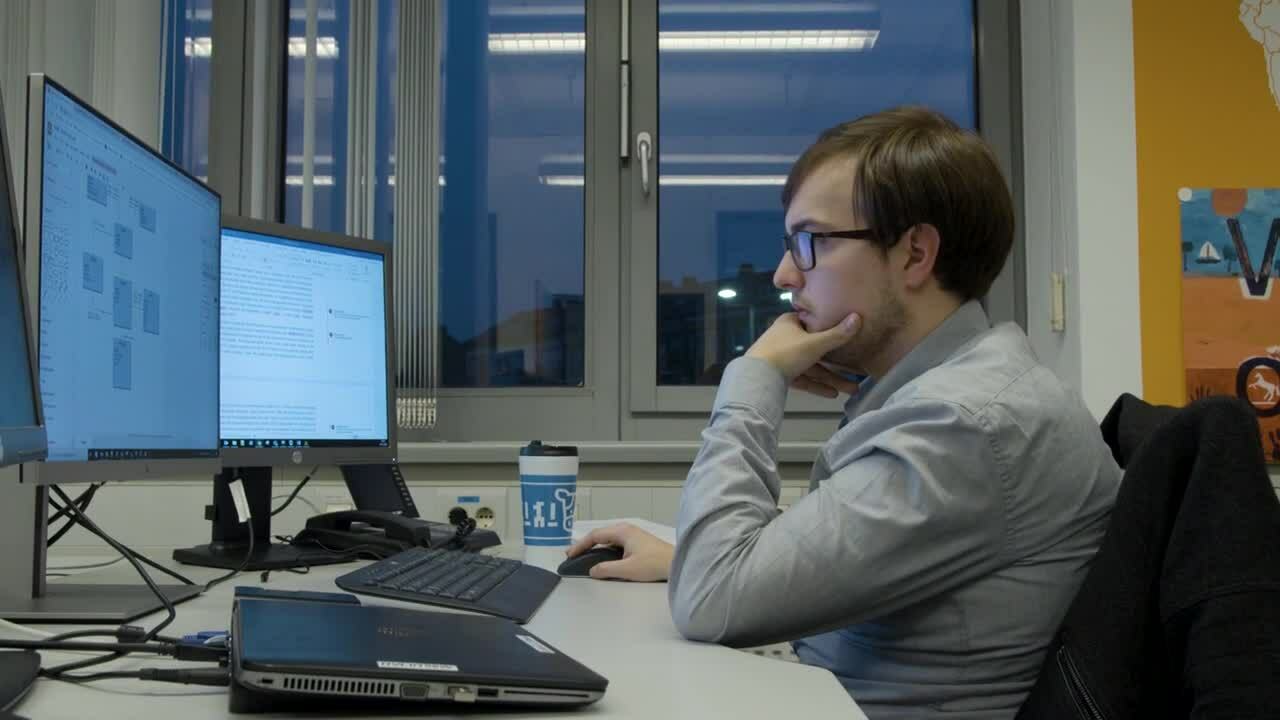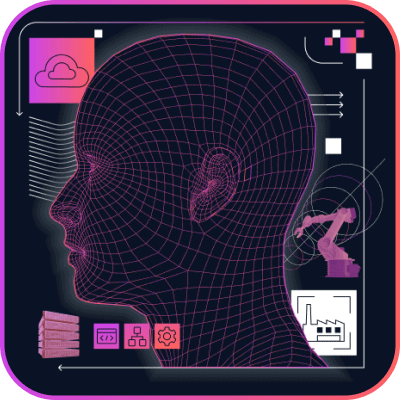Adopt Agile Development to Modernize Business Processes

Continental never stopped innovating. Today, their product portfolio extends well beyond tires into an extensive array of automotive digital technologies that include telematics, electronic motors, automated driving technology, and more.
These advanced systems and devices require sophisticated and adaptable software.
Software that Continental supports through a combination of enterprising, tech-savvy people, the Agile process, and low-code development.
A Software-driven Company
Angela Werner, Head of Digital Applications Platforms at Continental, leads a team responsible for supporting the organization’s software strategy, using technologies like business intelligence tools and a low-code platform.
The platforms and technologies she and her team investigate support internal teams, some of which are working on initiatives like automated driving and infotainment, initiatives that are driven by data.
“We are all looking for digitalization to bring the company one step forward.”
Angela and Sven Fleischer, Global Team Lead of Digital Application Platforms, support the company’s digitization efforts by developing applications that support internal processes in Finance, Purchasing, and HR.
“We support this from a central function, as Group IT, by providing IT tools,” says Sven of the Digital Application Platforms team, “to make life at work more efficient.”
Stalling Out
For decades, Continental used a suite of software and application development platforms, used for everything from managing e-mail and internal communications to successfully building hundreds of custom applications to digitize internal processes.
Continental moved to migrate onto modern software, first deciding to move its e-mail and productivity tools to Microsoft Office 365. They were then faced with the reality of hundreds of remaining applications, supporting critical business processes that required modernization and replacement.
As with all software, support for the former platforms began to wane over time, with Continental announcing it would end support for them starting in 2021. It was with this end-of-life date in mind that the Group IT team began searching for a replacement.
With a modern application development platform, the team could take advantage of more modern technology, such as:
- Cloud to significantly reduce latency for application users in far-flung locations,
- Mobile to offer new opportunities for efficiency and a modern user experience for Continental’s employees and partners.
Beyond the technological benefits a modern platform could provide, Group IT was desirous of more closely following the Agile methodology.
With an accelerated speed of development, developers could more frequently interact with business users, and more quickly validate that what they were creating. An embodiment of Continental’s mission to innovate, Sven has instilled in his team a culture of creativity. He encourages his team to find new technologies capable of supporting business-altering solutions.
Sven talks of shipping apps in terms of a garage:
“We talk about a garage process, where people become creative developing something new, eventually tapping new opportunities and business then bringing that out of the garage and into production, onto the street.”
The team wanted a platform that fostered creative discovery and made it possible to ideate, build, and deploy stable and rich applications. He wanted a garage and a means of getting those solutions out the door and into users’ hands.
Continental found that when it came to modernizing legacy systems and processes, the Mendix low-code development platform was where the rubber met the road.
Out of the Garage
Sven’s team used the Mendix platform to build a range of solutions that have helped streamline processes in Finance, HR, and Purchasing. Not only are these new solutions built on a platform that makes updates and evolutions possible, but they are also delivered to Continental employees much faster.
The ability to build apps faster is a true standout. The team remarked that without the automation and abstraction inherent in an enterprise low-code platform, it’s impossible to experience the responsiveness needed to truly implement an agile process.
On Agile
Sven’s team built the Electronic Capital Request (eCR) system. Sebastian Thom, Project Manager, worked on that project with Francis Limgenco, Platform Engineer. The solution manages the process for the approval and disposal of Capital Expenditure requests by:
- Formulating the workflow for a request for budget
- Assigning approvers based on the nature of the request
With the eCR application, built to high standards for its time, but no longer state-of-the art, the team found a more modern technology stack was necessary to handle the process.
Previously, it took users as long as two hours to make a request. “If you’re located in Brazil or China,” says Sebastian, “it took nearly an hour or hours to really do a request because of the long latency and response times of the servers.”
With Mendix, Sebastian and Francis created a robust and stable application with mobile capabilities and new data structures that severely cut the users’ request time.
“With Mendix you can do it within minutes.”
Beyond the significant time savings wrought by the new application, the tool itself was built in record time, with Sven’s team applying the Agile development methodology. The beauty of using an Agile-centric platform, according to Sebastian, is that “you can align with the businesspeople much faster on changes.”
On Citizen Developers
Francis has very little coding experience. “I’ve never been a programmer,” he says. But now he sees himself building more applications like the eCR in the future, using low-code. “I could make myself an example of somebody who had a very basic idea of what programming is,” he says. “I can actually build something.”
Francis is a citizen developer, a tech-savvy person who uses their subject matter expertise to create new business applications.
4 weeks to develop Material Number Application (MNA) Replacement
Inga Wenzel, Purchasing Business Analyst, is also a citizen developer. She didn’t have prior coding experience, either, but was critical in the development of the new Material Number Application (MNA) Replacement tool, which lets users submit requests to create or re-use production materials.
Using Mendix, Inga was able to co-develop the new MNA Replacement tool and create cleaner integrations with their SAP ERP backend system. This has led to cleaner, more available data and, ultimately, better search functionality for users.
Inga was able to create UI and logic on her own, without coding, and then handed the more technical parts to her counterpart in IT. Through that collaboration, Inga and her IT counterpart were able to develop the app in just four weeks.
“We sat very close together, me and the product owner, on one PC, and across from us sat my IT counterpart. It was fairly easy, and we could just share what we are working on.”
Inga’s work on the MNA Replacement application has made a big impact on how business and IT collaborate. The process of getting applications out of the garage has evolved as more solutions have been built.
“It’s like a motor or engine for the project,” she says. “It’s really like you have more involvement from the business, and I feel that it’s a good boost. It gives a lot of speed to the project.”
Arriving at the Destination
The Digital Applications Platforms team are building game-changing applications, adding tremendous value to the business. But the end results aren’t the only thing evolving. Angela and her team are also building a new way of working.
How involved the business has become throughout the development process has helped reduce the time it takes to go-live.
“We are fast, and we are closer to the real requirements. The business will get more of what they really want, because we do it now in an Agile way. They are really involved and can learn as we develop the product,” Angela concluded.
Building applications with Mendix has made collaboration across the enterprise possible at Continental, but has also enabled people from any department to become makers. People like Francis and Inga, both who had little to no prior development experience, have created applications that delivered immediate value upon launch. Angela knows these changes are just the beginning of something great.
Inga, by collecting her own team’s experiences with Mendix, has become proficient enough to teach low-code to others across the organization, providing guidance and governance as they begin building applications. She envisions an entire organization of untapped citizen developers beginning to build their own innovative solutions to business problems.
Moreover, Angela understands that for such a movement to succeed, she needs to foster trust across the business. And with the applications her team has built using low-code, a body of proof is materializing.
What’s next for the Continental? Kilometers of open road. Keep an eye on where they’re headed.

Reimagine Your Smart Manufacturing Initiatives with Low-Code
In this on-demand webinar, see how a low-code platform can help you join forces with your workforce to reimagine your smart manufacturing initiatives.
Watch now

